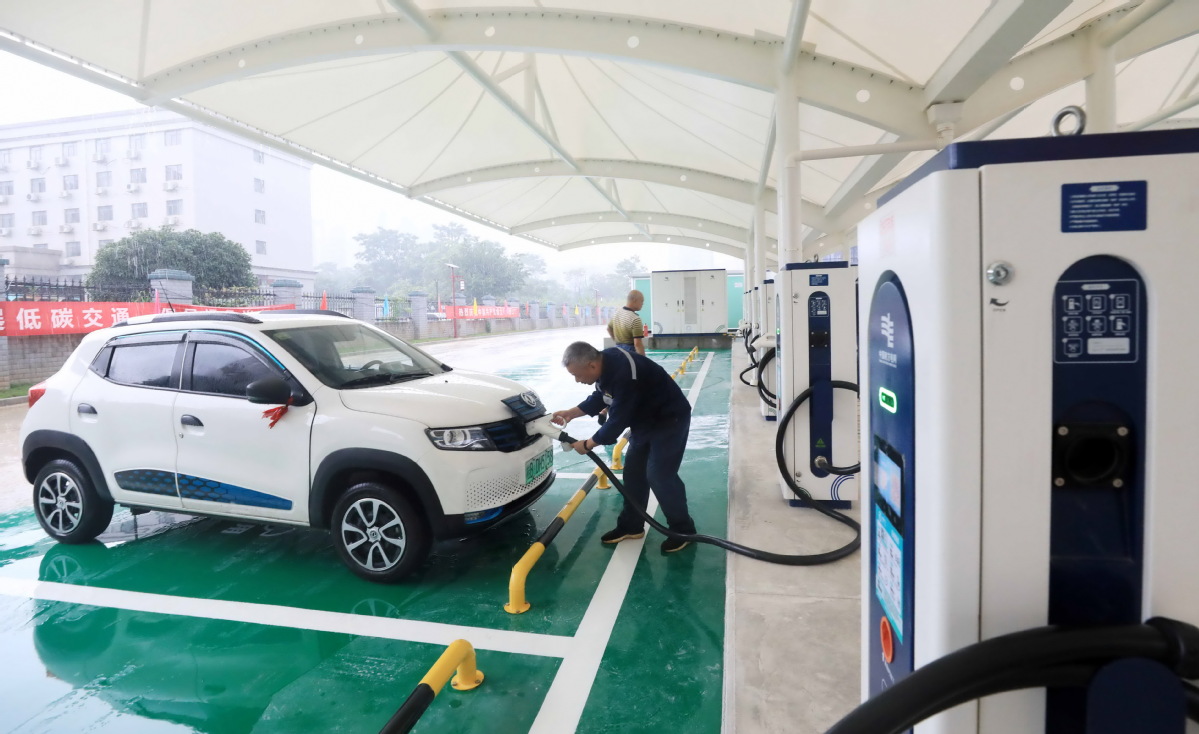Nation's low-carbon pursuit charges NEV sector


BEIJING-China, the world's largest car market, has seen its new energy vehicle (NEV) industry enter the fast lane, powered by the country's low-carbon strategy and surging demand.
"The NEV industry is the integration of information technology and manufacturing systems," said Chen Shihua, deputy secretary-general of the China Association of Automobile Manufacturers (CAAM).
"Representing the trend of industrial development, the burgeoning NEV industry is also one of the key new drivers of the country's economic growth," Chen said.
China has seen rising market enthusiasm for eco-friendly NEVs amid a government push and growing public awareness of environmental protection. More support and efforts are underway, with great potential ahead.
China's NEV industry has entered a new phase of development thanks to the country's clear policy signals on low-carbon growth and many years of efforts in the sector.
The sector has seen great enhancement of its technical level, industrial system and enterprise competitiveness, which is shown by key indicators such as production, sales volume and ownership of NEVs.
China's NEV market has maintained strong growth momentum. NEV ownership reached about 5.8 million units by the end of May, accounting for about half of the global total, the CAAM said.
The country's NEV sales reached 950,000 units in the first five months, increasing 224.2 percent from the same period last year.
The annual growth rate of electric vehicle production and sales in the next five years is expected to remain above 40 percent, according to a forecast by CAAM.
Fuel consumption and emissions from traditional fuel-powered cars are tough challenges ahead for low-carbon growth. The NEV sector is expected to help China attain a carbon dioxide emissions peak by 2030 and carbon neutrality by 2060.
"New energy is key to the transformation of the automobile industry. Continuously increasing NEV ownership will help China reach the goal of carbon neutrality," said Fu Bingfeng, executive vice-president of CAAM.
China unveiled a development plan in November for its NEV industry between 2021 and 2035 that aims to accelerate the country's transition into an automotive powerhouse.
The proportion of new NEVs in the sale of new vehicles is expected to rise to about 20 percent by 2025, and automobiles used in public transportation will be completely electrified by 2035, according to the plan.
The increasing penetration rate of NEVs will bring about clear changes in China's automobile market. Booming infrastructure development, as well as improved supportive policies, regulations and standards, will jointly power growth of the sector.
As of April, 65,000 charging stations, 644 power swap stations and 1.87 million charging piles had been built nationwide. They cover 176 cities and more than 50,000 kilometers of highways, the CAAM said.
State Grid Corporation of China has invested 27.4 billion yuan ($4.22 billion) in building the charging infrastructure and highway fast-charging network, which reaches urban and rural areas nationwide. To date, around 128,000 units of charging facilities have also been set up across the country.
The policy support and progress in tech innovation have facilitated the rapid growth of the NEV industry. However, the country still lags in core-tech innovation capabilities and infrastructure construction, said Xin Guobin, vice-minister of industry and information technology.
To address these issues, the Ministry of Industry and Information Technology (MIIT) will strengthen supervision of NEV quality and promote the integration of technologies such as vehicle electrification and intelligent networks, among others.
The MIIT will also improve NEV charging and parking services, enhance electrification of the public transportation system and promote supporting industrial chains.




































